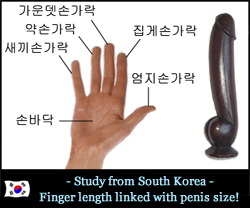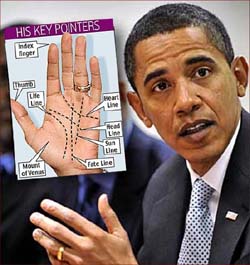FINGER LENGTH POINTS OUT: Neanderthals were more competitive & promiscuous!
November 4, 2010
Researchers presented earlier today new evidence that neanderthals were more competitive & promiscuous than we are today! Maybe more surprizing is the method which the researchers used to acquire their new findings: via finger length measurements!
The study, published in the Proceedings of the Royal Society B, draws upon a famous and controversial indicator of social behavior: the comparative length of the index finger and the ring finger, also known as the 2D:4D finger ratio. If the ring finger is longer than the index finger, that’s supposed to be correlated with higher prenatal exposure to androgens — resulting in a higher proclivity for aggressiveness and promiscuity.
Scientists, in collaboration with researchers at the universities of Southampton and Calgary, used finger ratios from fossilised skeletal remains of early apes and extinct hominins, as indicators of the levels of exposure species had to prenatal androgens – a group of hormones that is important in the development of masculine characteristics such as aggression and promiscuity.

It is thought that androgens, such as testosterone, affect finger length during development in the womb. High levels of the hormones increase the length of the fourth finger in comparison to the second finger, resulting in a low index to ring finger ratio (2D:4D digit ratio). Researchers analysed the fossil finger bone ratios of Neanderthals and early apes, as well as hominins, Ardipithecus ramidus and Australopithecus afarensis, to further understanding of their social behaviour.

The hand bones of an early hominid

The hand bones of a neanderthal
The team found that the fossil finger ratios of Neanderthals, and early members of the human species, were lower than most living humans, which suggests that they had been exposed to high levels of prenatal androgens. This indicates that early humans were likely to be more competitive and promiscuous than people today.
The results also suggest that early hominin, Australopithecus – dating from approximately three to four million years ago – was likely to be monogamous, whereas the earlier Ardipithecus appears to have been highly promiscuous and more similar to living great apes. The research suggests that more fossils are needed to fully understand the social behaviour of these two groups.
Dr Susanne Shultz, from the Institute of Cognitive and Evolutionary Anthropology at the University of Oxford describes:
“Social behaviours are notoriously difficult to identify in the fossil record. Developing novel approaches, such as finger ratios, can help inform the current debate surrounding the social systems of the earliest human ancestors.”
And Dr Emma Nelson, an archaeologist from the University of Liverpool, argues that comparing the finger-length ratios of extinct and present-day species is a valid technique for making an indirect assessment of our long-gone ancestors’ social behavior. She said:
“It is believed that prenatal androgens (male sex hormones) affect the genes responsible for the development of the fingers, toes and the reproductive system. We have recently shown that promiscuous primate species have low index to ring finger ratios, while monogamous species have high ratios.”
“We used this information to estimate the social behaviour of extinct apes and hominins. Although the fossil record is limited for this period, and more fossils are needed to confirm our findings, this method could prove to be an exciting new way of understanding how our social behaviour has evolved.
READ MORE ABOUT EARLIER RESULTS:
• Primate finger length linked with social behavior
• Human finger length & sexual orientation
• Evolution of the human hand & palmar creases
 Finger length & penis size linked!
Finger length & penis size linked! The hands of Barack Obama
The hands of Barack Obama Megan Fox thumbs – TRIBUTE
Megan Fox thumbs – TRIBUTE Hrithik Roshan thumbs – TRIBUTE
Hrithik Roshan thumbs – TRIBUTE Hand Reading Research!
Hand Reading Research! MultiPerspective Palm Reading
MultiPerspective Palm Reading